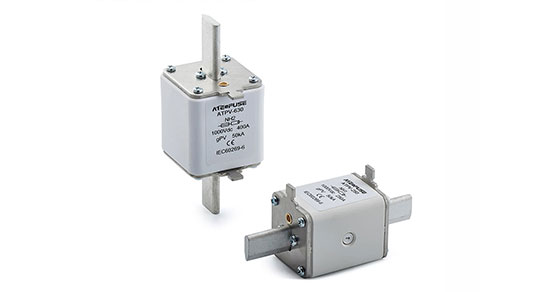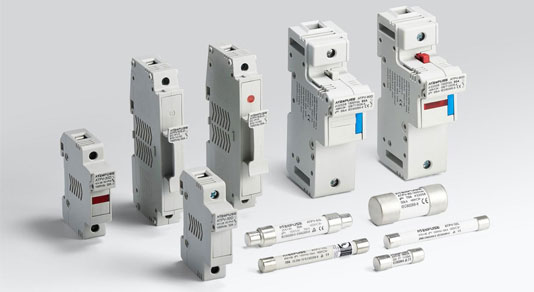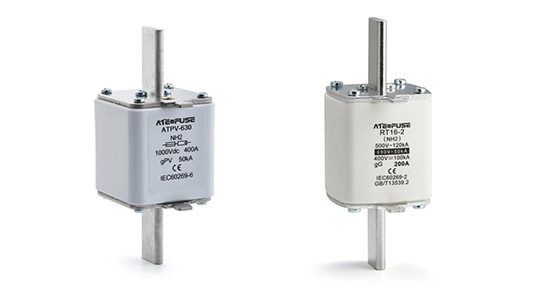Is There a Difference Between AC and DC Fuses?
In the realm of electrical systems, fuses play a crucial role in safeguarding circuits and equipment from damage caused by excessive current. But when it comes to alternating current (AC) and direct current (DC) circuits, is there a distinction between the fuses used? The answer is a resounding yes. AC and DC fuses might look similar at first glance, but they have significant differences in design, operation, and application. This article will explore these differences to help you understand why choosing the right fuse for each type of circuit matters.
1. Fundamental Circuit Differences: AC vs. DC
Before delving into fuse differences, it’s essential to grasp how AC and DC circuits function.
• AC Circuits: Alternating current constantly changes direction, usually following a sinusoidal waveform. In household and industrial setups, the frequency is typically 50 or 60 Hz. The voltage in an AC circuit oscillates between positive and negative peaks. This periodic change affects how fuses respond to overcurrents.
• DC Circuits: Direct current flows in a single, steady direction. Batteries, solar panels, and some electronic devices supply DC power. The voltage in a DC circuit remains relatively constant (e.g., a 12V car battery), leading to unique challenges for fuses.
2. How Fuses Work: Basic Principle
At their core, fuses operate on a simple concept: a thin metal conductor (the fuse element) melts when excessive current passes through it, breaking the circuit and preventing damage. However, the behavior of this process differs in AC and DC environments due to the nature of the current.
3. Key Differences Between AC and DC Fuses
a. Arc Quenching
When a fuse blows, an electrical arc can form as the circuit breaks. Managing this arc is critical for safety and effective protection.
• AC Fuses: In AC circuits, the current naturally “zeros” (drops to zero) 100 or 120 times per second (for 50/60 Hz). This zero - crossing helps extinguish the arc. AC fuses are designed to leverage this natural phenomenon, using features like arc - quenching chambers to cool and interrupt the arc quickly once the current zeros.
• DC Fuses: DC circuits have no natural zero - crossing. The arc can persist longer, as the voltage remains constant. DC fuses must therefore include specialized designs (e.g., longer arc - quenching paths, magnetic arc suppression) to extinguish the arc before it damages the fuse or surrounding components.
b. Voltage Rating
The voltage rating of a fuse indicates the maximum voltage it can safely interrupt.
• AC Fuses: Rated for the “root - mean - square” (RMS) voltage of the AC circuit. However, AC voltage oscillates to a peak value (e.g., a 220V RMS AC supply has a peak voltage of around 311V). AC fuses are engineered to handle these peak voltages during arcing.
• DC Fuses: Rated for a constant DC voltage. Since there’s no voltage oscillation, DC fuses must withstand the full voltage continuously. Using a DC fuse in an AC circuit (or vice versa) can lead to arc - related failures, as the voltage rating may not match the circuit’s requirements.
c. Current - Carrying and Melting Characteristics
The way fuses respond to overcurrents also differs.
• AC Fuses: The alternating nature of the current means the fuse element heats up and cools down cyclically. This allows for some tolerance to brief current surges (e.g., motor start - up currents). AC fuses are designed to account for these transient loads.
• DC Fuses: In DC circuits, the current flows steadily, so the fuse element heats up continuously under an overcurrent. DC fuses must melt quickly to interrupt the current before damage occurs, as there’s no cyclic cooling like in AC.
d. Physical Design and Construction
To address these operational differences, AC and DC fuses have distinct physical designs:
• AC Fuses: Often use simpler arc - quenching mechanisms, relying on the natural zero - crossing. They may have smaller or less complex arc chambers.
• DC Fuses: Feature larger or specially designed arc chambers, as well as materials that can withstand prolonged arcing. Some DC fuses also include magnetic elements to help “blow out” the arc.

4. Why Using the Right Fuse Matters
Using an AC fuse in a DC circuit (or vice versa) is risky:
• Safety Hazards: A mismatched fuse may fail to extinguish an arc, leading to overheating, fires, or explosions.
• Equipment Damage: The fuse might not interrupt the current quickly enough, damaging sensitive electronics or wiring.
• System Reliability: Incorrect fuses can cause nuisance tripping (failing too often) or fail to trip when needed, compromising circuit protection.
5. Choosing the Right Fuse
When selecting a fuse:
1.Identify the Circuit Type: Determine if it’s AC or DC.
2.Check Voltage and Current Ratings: Ensure the fuse matches the circuit’s voltage (AC or DC) and can handle the expected current (including transient surges).
3.Consider the Load: For example, DC circuits with motors or high - inrush loads may need fuses with specialized response characteristics.
In conclusion, AC and DC fuses are not interchangeable. Their design, operation, and safety mechanisms are tailored to the unique demands of alternating and direct current circuits. Understanding these differences is key to protecting your electrical systems, preventing hazards, and ensuring reliable performance. Whether you’re wiring a household outlet (AC) or a solar panel system (DC), always choose the fuse designed for the job.






